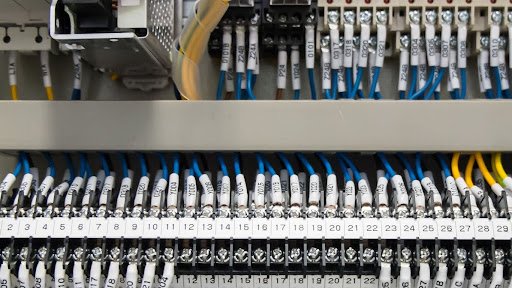Batch process control plays a pivotal role in industries like pharmaceuticals, food processing, chemicals, and beverages, where flexibility, precision, and efficiency are critical. Programmable Logic Controllers (PLCs), particularly advanced systems like the BMEP582040 Modicon M580 Processor Module, combined with Human-Machine Interfaces (HMIs) such as PLCHMI, offer scalable, reliable, and efficient automation solutions. This article explores key techniques and strategies for leveraging these PLC systems to streamline batch processes, ensuring accuracy, repeatability, and adherence to industry standards.
Understanding Batch Process Control
Batch process control refers to the execution of a series of steps or operations on a specified quantity of material. It contrasts with continuous processing, where production occurs without interruption. In batch processes, precise control over individual steps (e.g., mixing, heating, or cooling) is essential to ensure consistent product quality.
For industries that require variable product formulations or production rates, batch processing offers greater flexibility, enabling manufacturers to switch between products efficiently. However, this flexibility demands tight control, making automation systems like PLCs indispensable.
Key Techniques for PLC-based Batch Control
- Recipe Management
Recipe management is the heart of batch processing, involving the control of various parameters, including material quantities, process timing, and operational sequences. PLCs can store multiple recipes, allowing operators to switch between product configurations efficiently. Advanced PLCs are capable of managing complex recipe data, including setpoints, material lists, and sequencing logic.
By integrating Human-Machine Interfaces (HMIs), operators can easily select, edit, and start recipes, with the PLC handling all the necessary control logic for each process step. - Sequential Function Chart (SFC) Programming
Sequential Function Chart (SFC) is a popular programming method for batch processes due to its clear representation of process steps. SFCs allow operators to visualize each step of the batch process as a state in a flowchart, with transitions between states based on specific conditions.
By utilizing SFCs, PLCs can manage complex batch operations that require sequential or conditional logic. For instance, a batch process might need heating to a certain temperature before mixing, followed by cooling. Each of these steps is controlled by the PLC according to the predefined sequence in the SFC. - Time-Based Control
Many batch processes require precise time control for operations such as heating, cooling, mixing, or dosing. PLCs excel at time-based control by utilizing internal timers and clocks to manage these operations accurately. Time-based control ensures consistency across batches, with PLCs automating the timing for each process.
Time control may also involve delays between operations or specific reaction times, which are crucial in ensuring product quality and reducing variability in production. - Feedback Control Loops
Maintaining optimal process conditions, such as temperature, pressure, and flow rates, is essential in batch processing. PLCs are equipped with feedback control mechanisms, including Proportional-Integral-Derivative (PID) loops, to regulate these variables dynamically.
Feedback control allows the PLC to continuously monitor real-time data from sensors and adjust control elements, such as valves or heaters, to maintain the desired setpoints. This ensures that deviations are minimized, and product quality remains consistent. - Alarm Management and Safety Integration
Safety is critical in batch process environments, especially in industries like pharmaceuticals and chemicals. PLCs can monitor safety parameters, such as temperature thresholds, pressure limits, and equipment status, and trigger alarms or automatic shutdowns when limits are breached.
Integrating safety controls within the PLC system enhances process reliability and ensures that operators are alerted to issues in real-time. This can prevent accidents, equipment damage, or loss of product, and enable a quick response to abnormal situations. - Integration with SCADA Systems
SCADA systems provide centralized monitoring and control of batch processes. By integrating PLCs with SCADA, operators can access real-time data, adjust parameters remotely, and generate reports on process performance.
SCADA integration also provides a higher-level view of the batch process, offering insights into equipment status, operational efficiency, and production throughput. This connectivity improves visibility into the process, facilitating decision-making and troubleshooting.
Strategies for Optimizing Batch Process Control with PLCs
- Modular Design Approach For complex batch processes, modular design simplifies both programming and troubleshooting. The Modicon M580 supports this approach, where each module or sub-system manages a specific part of the process. Coupled with PLCHMI, this modular architecture ensures greater flexibility and easier system upgrades, allowing manufacturers to scale production as needed.
- Use of Redundancy and Backup Systems Batch processes must remain reliable, and the BMEP582040 Modicon M580 offers redundancy features to ensure critical components such as CPUs, communication modules, and power supplies have backups. This reduces the risk of downtime during production, with PLCHMI providing real-time monitoring of system status and redundancy performance.
- Data-Driven Process Improvement
The data generated by PLCs during batch operations can be used to optimize processes over time. By analyzing trends, identifying bottlenecks, and monitoring key performance indicators (KPIs), manufacturers can fine-tune their batch processes to improve efficiency, reduce waste, and ensure product consistency. - Regular Maintenance and Upgrades
Like any automation system, PLCs require regular maintenance to ensure they continue operating at peak efficiency. Scheduled maintenance, software updates, and regular checks on sensors and actuators can help prevent breakdowns and maintain the precision of batch operations.
Conclusion
PLCs have transformed batch process control, offering flexibility, scalability, and precision across industries. By leveraging techniques such as recipe management, sequential programming, feedback control loops, and SCADA integration, manufacturers can achieve high levels of automation, consistency, and efficiency. Implementing strategies like modular design, redundancy, and data-driven improvements ensures that batch processes remain reliable and adaptable to changing production demands. As industries continue to evolve, the role of PLCs in batch process control will remain critical to optimizing production and ensuring product quality.
Stay in touch to get more updates & alerts on Picnob! Thank you



